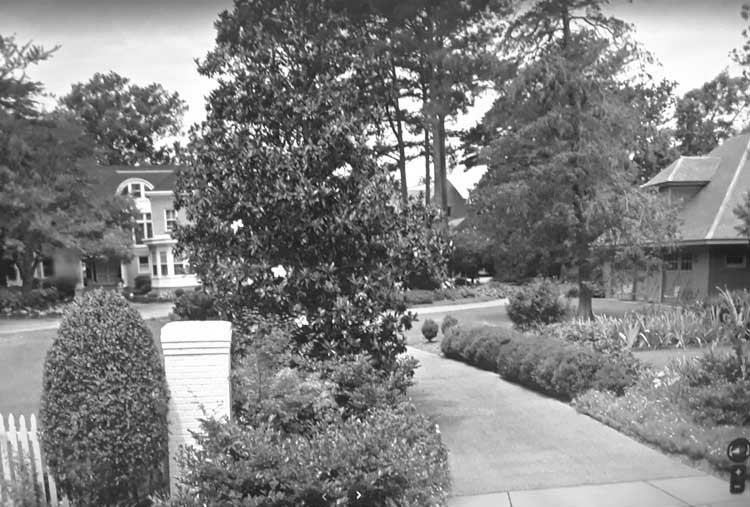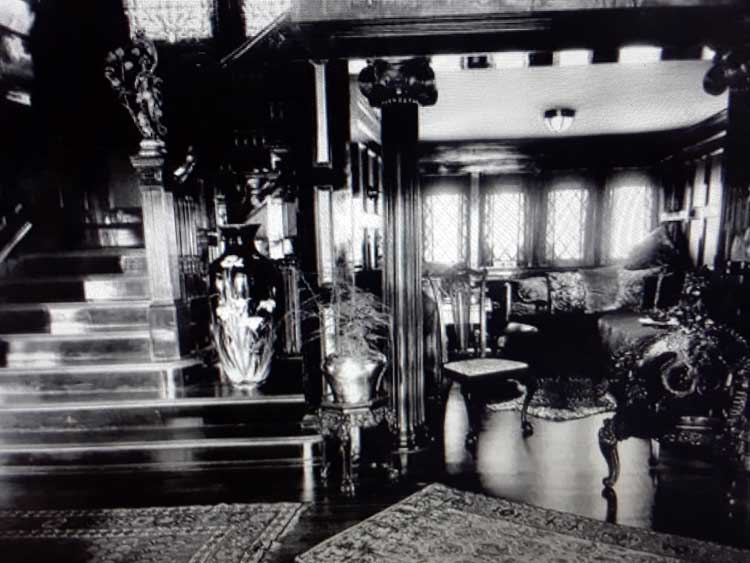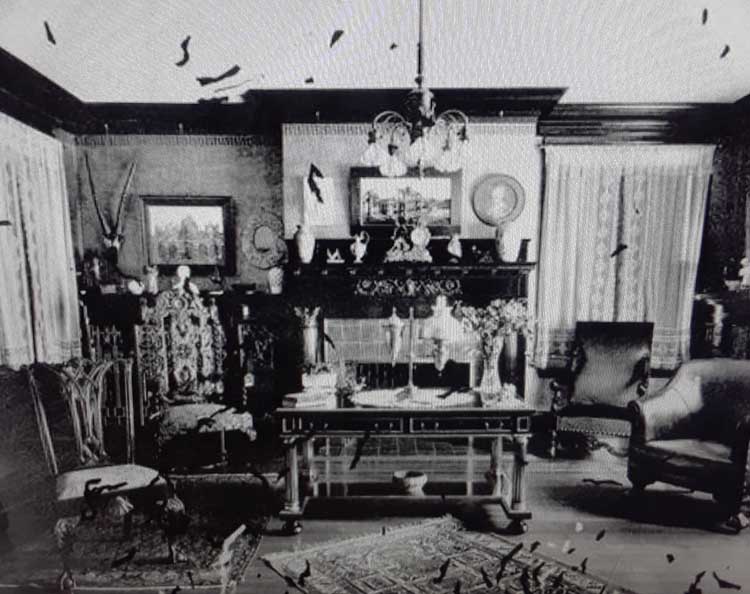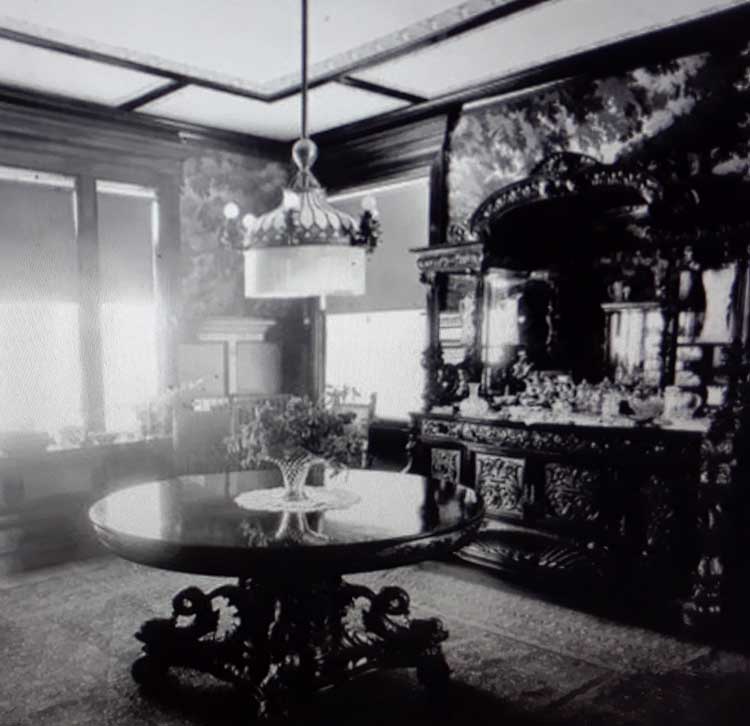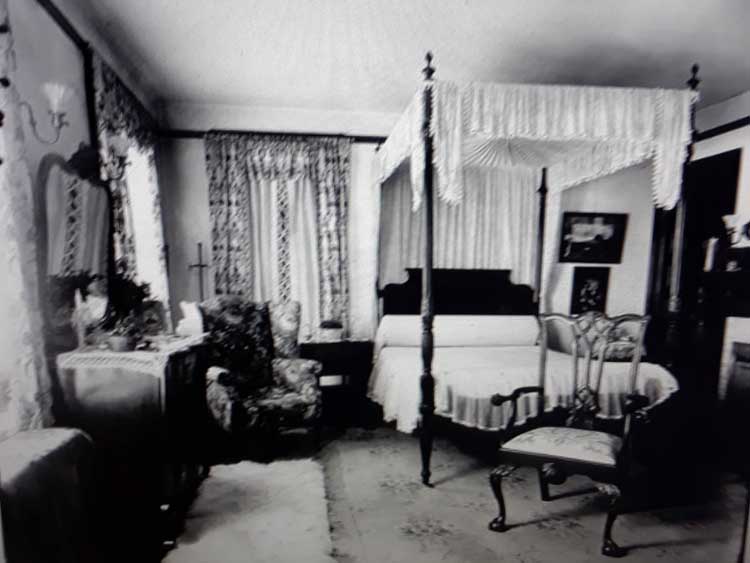Historical Reminiscing with Robert B. Hitchings
When Disaster Strikes
Copyright. All rights reserved.
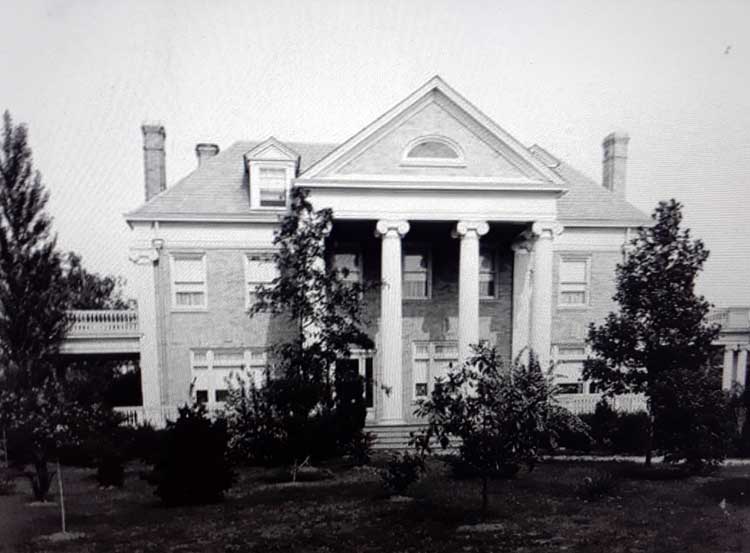
When disaster hits, it brings people together and this is what took place when I met the Watts Family on Studely Avenue around September 14, 1960. Hurricane Donna slammed into our area on Monday, September 12, 1960, with 94 mile an hour winds. We had not had a powerful hurricane like this since Hurricane Hazel hit in 1955.
I remember the television news on Channel 3 (CBS) keeping us informed about this powerful storm. My parents were worried as were so many others in the Norfolk area. Norfolk was in the path and this hurricane was approaching at a rapid pace. Schools were closed for a week and we kids were happy. We had flooding and many old trees toppled down in my area of Edgewater. Our electricity was off for a few days and phone lines were down too. In front of our house was a large umbrella tree that went down in this hurricane. Mom lost her favorite Yaupon holly tree (llex vouitoria) that came from Uncle Bill Butt’s home in Crestwood, Norfolk country. The Native Americans used the leaves for brewing tea before they went into battle. Also, this Yaupon tea with their small leaves was used by the earliest colonists in childbearing.
When phone service was finally restored, I received a phone call from Patricia (Pat) Watts inviting me to come over and see the damage the hurricane did to their yard. I rode my bicycle over and was amazed at the number of trees blown down at her home. Pat Watts and her friends Anne Zoby, Stuart and Bobby Gahagen all met over at Pat’s house. We were all in the 5th grade at Carolton Oaks Private School, now called Norfolk Collegiate.
The Watts had a modern brick, ranch-style home with windows from the floor to the ceiling. This modern house was later sold to Jacques Cousteau (1910-1997) the underwater conservationist. However, her Auntie Em lived next door and her place looked like a war-zone. At least 5 or 6 big oaks were up-rooted by the hurricane. To this day I have never seen so many trees down. Lucky her house was not in the path when the trees fell. We kids were jumping over the trees and looking at the big roots that were exposed to the surface. I remembered a large concrete fish pond that was empty but had lots of trash and standing water. I heard that in her day Mrs. Swartz had raised large goldfish and many a neighborhood boy got chased away for playing in her fish pond. I also remember a tree had fallen around the carriage house/garage.
Later that day Pat said to me, "Robert, would you like to meet my Auntie Em? This is her house."
Auntie Em lived in this old southern style mansion of yellow brick built around 1907. The yellow brick was made out of local clay that were later called London Stocks. The portico had 4 beautiful white columns that faced the Elizabeth River with a nice terrace around. At the top pendent was an arched window that was open and one could see all the pigeons moving about inside, apparently seeking a place of shelter after the hurricane had passed.
Auntie Em was Elizabeth Watts Swartz (1866-1963), the wife of William Grant Swartz who was the President and owner of the fabulous department store in downtown Norfolk. She married William in 1904. They had no children. Before her marriage she lived in Philadelphia, Pennsylvania, where she taught the deaf and blind.
We children went around the back door and rang the bell. A very nice African-American woman showed us in. She wore a white uniform and I was introduced to her. The kitchen was spotless and she offered us a glass of water in cut glass tumblers. I was quite surprised for my mother had the same glasses and they were only used for special occasions, like Christmas.
As I followed Pat into the house, I quickly noticed how dark the inside was. I was quickly informed that the shades were always down because the sun fades tapestries and furniture. The house inside had very plain but elegant wallpaper as well as tapestries, wall hangings and statues. I remember seeing the famous Wing Victory statue. It was a beautiful old home with lots of Chinese antiques made out of teak wood. Many of the chairs had a wolf head or dragon with a bright red tongue carved onto each hand rest, which reminded me of Boris Karloff's new TV show called "Thriller."
Approaching the stairs I quickly noticed a large Chinese vase that was 5 feet tall. I remember one time my friends asking me to stand next to this vase and I was taller. Another time Lee Watts decided to slide down this banister rail and her foot hit the vase. Lucky for her, I was standing next to the vase and was able to stop before it crashed to the floor. As we proceeded up the stairs there were four beautiful stained glass windows facing the back yard. We then came to the bedroom of Mrs. Swartz. I'll never forgot meeting this grand old lady. She welcomed us to her house and said to me, "Please sit down on my bed." She had a large 4-poster bed with a white canopy. As she gazed at me she said, "Robert, you’re tall. I wish I had been tall. Being short I missed many parades as they went by." I remember Mrs. Swartz was sitting in a large light green wing chair, with her hair pulled up in a soft bun on top her head, which was very fashionable in that day. She wore small silver glasses and a white old-fashioned dressing gown. She was a tiny, elegant woman. In front of her was a card table with the Virginian-Pilot newspaper open to an advertisement of the Swartz store. In her right hand was a long silver magnifying glass to help her read the newspaper. That day she had five pale blue floral folding hand fans that she had brought over from the store and she gave each one of us a fan. She said to me,"You take this to your mother." And I took that fan and gave it to my mom, which is still with us today.The house was still heated by coal and had not been converted to oil. I remembered seeing the old coal shoot visible from the back door.
I visited the grand old lady many times that year. And each time I got to see more of her treasures. I remember the book cases and all her books of the poetry by Burns, Tennyson and Keats. In her music room was her grand Victrola with old records. Yes, we kids were allowed to play and enjoy her music collection. And I remember the girls trying to dance the "Minuet in G" by Beethoven. In that room there were three metal doll houses that the 3 Watts girls had received from Santa Clause. While the girls played, Bobby and I enjoyed the books. One of the books contained a poem we had to learn that year in school called "Ozymandias" by Percy Shelley. Even the old magazines of the 1920’s were present and enjoyable. In one room Lee showed us a large cardboard box full of her Auntie Em's high button shoes. And in every room was a shoe horn and a shoe button hook. Also present on every bureau was a square enclosed glass tray. Inside were crushed rose petals which gave off a nice fragrance. As I grew older, I learned this was called potpourri. In the hallway was a china press cabinet with lots of interesting things including a rather large pale, bluish bird’s egg. I was told this was an ostrich egg. As I got older and into ornithology, I learned this unusual egg was not an ostrich egg at all, but a large goose egg. Looking into that old china press cabinet was very fascinating to me but now I only remember that old egg.
Thinking back on this house helps me appreciate the past and where we came from. That house opened up my mind to a way of life that is now gone. Auntie Em was very much an Edwardian lady in style, grace and dress. She had traveled to Europe on the famous liners of the day. Her house reflected the tastes of that time period.
When disasters strike, you never know whom you’re going to meet. Hurricanes come and go, but Hurricane Donna blew into Norfolk and with that destruction, I met a lovely lady called Mrs. W. G. Swartz of Norfolk, Virginia. That day I stepped back in time and had a glimpse into another era which included the design and layout of the house, the orderliness of the furnishings and the servants, the whole resulting in museum-style quality made into a comfortable home. Mrs. Swartz's old home was an educational experience. It made me aware of another time period that helped inspire my life-long passion for history. It’s called first-hand experience.
Forty years later when I became the archivist/historian for the Sargeant Memorial Room at Kirn Memorial Library in downtown Norfolk (now gone), I came across several photographs of the Swartz house taken by the famous photographer Harry Mann. Looking over these photographs brought back many fond memories. Nothing had changed as the house was the same in 1960 as when the photographs had been taken in 1910. And my visit to this grand old antebellum house was brought about by a devastating Hurricane that hit Norfolk in 1960, a fierce hurricane called Donna.
(photos may be enlarged by clicking)
Picture sources: Library of Virginia, Harry Mann Collection, Google & Susan W. Fleming* * * * * * * * *
Robert B. Hitchings is a seventh generation Norfolk resident, graduating with an Associate's Degree in Biology from Old Dominion University and BA in history from Virginia Wesleyan University. During his studies he was awarded a scholarship at Emmanuel College, Cambridge, England, and he was an exchange student at Brooks-Westminster College, Oxford, England. From 1999-2014 he worked as head of the Sargeant Memorial History Room at Norfolk Public Library, and since then has headed the Wallace History Room at Chesapeake Public Library. He is also the President of the Norfolk County Historical Society, and for six years was a columnist for The Virginian-Pilot. Robert may be reached at nchs.wallaceroom@gmail.com
